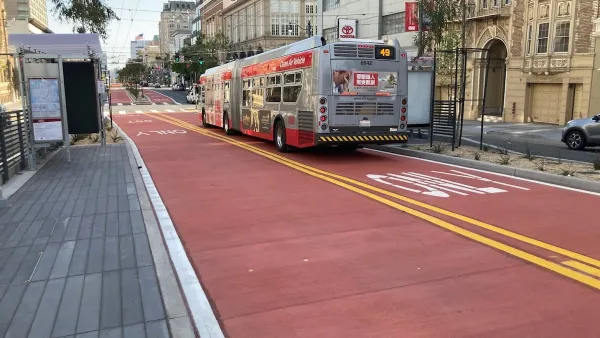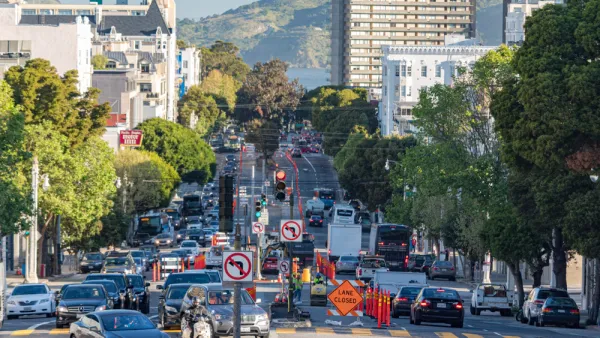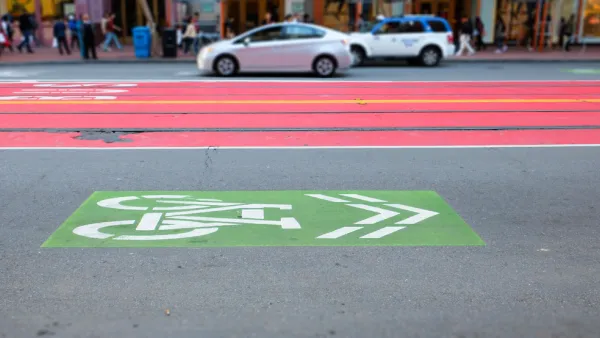The Van Ness Avenue Bus Rapid Transit project will bring the first dedicated BRT corridor to San Francisco, nearly two decades after voters approved the project.

The San Francisco Municipal Transportation Agency (SFMTA) Muni and Golden Gate Transit recently conducted testing for the Van Ness Bus Rapid Transit (BRT) corridor, according to an article in Mass Transit. "The testing included emergency turns and maneuvers, repositioning buses, verifying signals are working, clearances between passing buses and safe turns while bike racks are deployed." Traffic engineers also tested traffic and transit signals and reviewed street markings for any needed adjustments. Staff will be trained to drive buses on a BRT line, a skill new to most Muni operators. Officials say the BRT line and associated improvements will reduce congestion and improve the speed and reliability of bus travel on Van Ness Avenue.
Last November, an article by Carl Nolte outlined the long history of Van Ness Avenue as one of San Francisco's major thoroughfares, a "grand boulevard" that later became the city's Auto Row. Today, the street serves as a major north-south arterial. The Van Ness line, San Francisco's first BRT corridor, is scheduled to open this spring after almost two decades of delays. Initially approved by voters in 2003, the project did not break ground until 2016. As stated by SFMTA, "The planned improvements are expected to cut travel times for Golden Gate Transit and the 47, 49 and 90 Muni routes by 32 percent."
FULL STORY: Bus testing on the new Van Ness BRT corridor a success

National Parks Layoffs Will Cause Communities to Lose Billions
Thousands of essential park workers were laid off this week, just before the busy spring break season.

Retro-silient?: America’s First “Eco-burb,” The Woodlands Turns 50
A master-planned community north of Houston offers lessons on green infrastructure and resilient design, but falls short of its founder’s lofty affordability and walkability goals.

Delivering for America Plan Will Downgrade Mail Service in at Least 49.5 Percent of Zip Codes
Republican and Democrat lawmakers criticize the plan for its disproportionate negative impact on rural communities.

Test News Post 1
This is a summary

Test News Headline 46
Test for the image on the front page.

Balancing Bombs and Butterflies: How the National Guard Protects a Rare Species
The National Guard at Fort Indiantown Gap uses GIS technology and land management strategies to balance military training with conservation efforts, ensuring the survival of the rare eastern regal fritillary butterfly.
Urban Design for Planners 1: Software Tools
This six-course series explores essential urban design concepts using open source software and equips planners with the tools they need to participate fully in the urban design process.
Planning for Universal Design
Learn the tools for implementing Universal Design in planning regulations.
EMC Planning Group, Inc.
Planetizen
Planetizen
Mpact (formerly Rail~Volution)
Great Falls Development Authority, Inc.
HUDs Office of Policy Development and Research
NYU Wagner Graduate School of Public Service





























